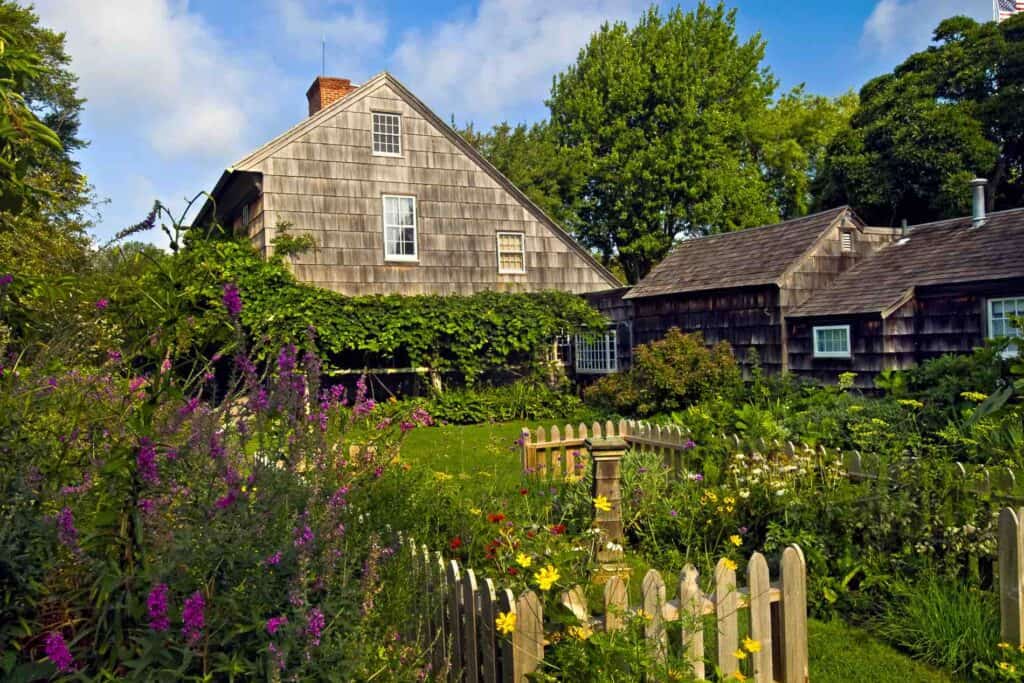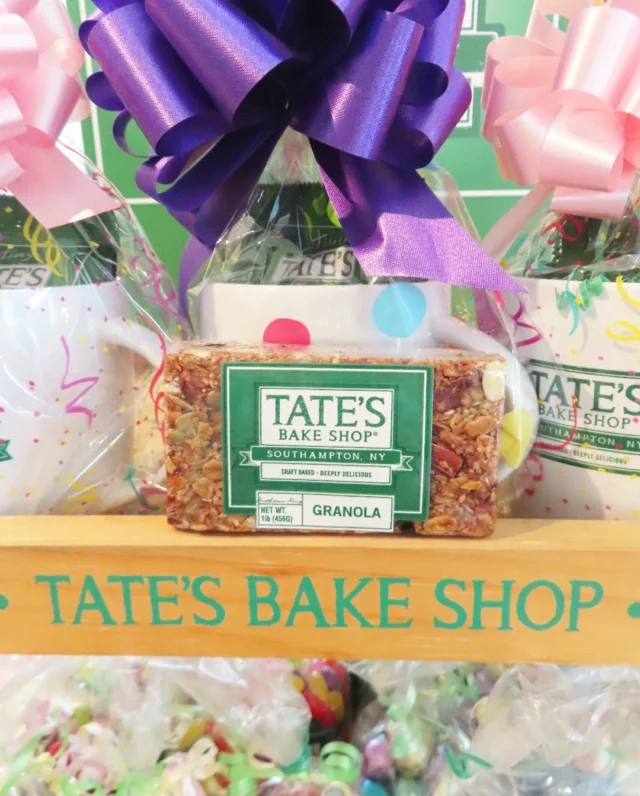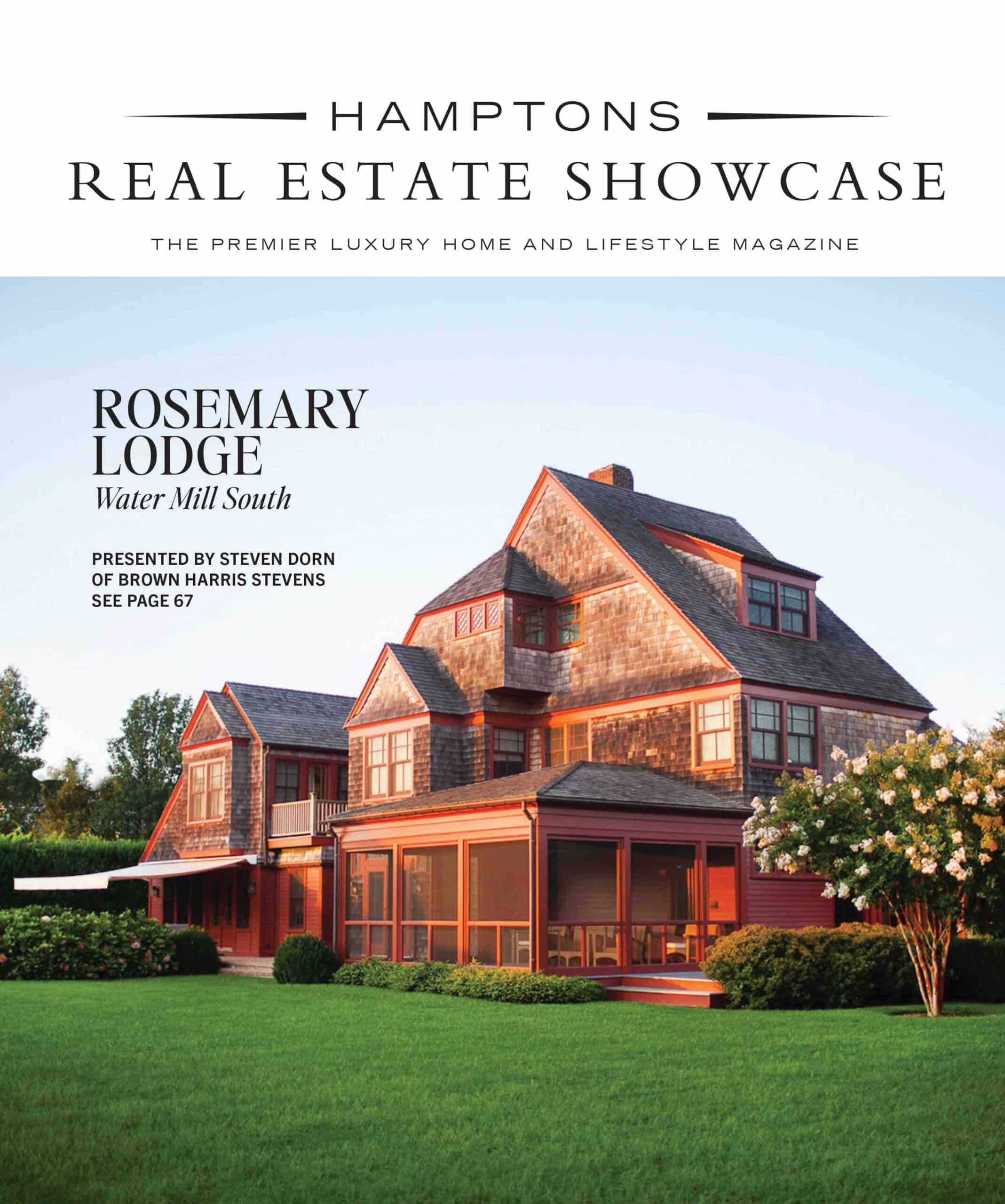The East End Is The Perfect Location For Creating These Cherished Gardens

Cottage gardens possess an undeniable charm, exuding a lively and colorful blend of old-fashioned plants that epitomize informality. These gardens flourish in a joyful, unrestrained manner, spilling onto pathways, leaning on fences, and creating an exuberant atmosphere. Their relaxed spirit perfectly complements the easygoing vibe of summer by the sea on the East End. Even within a formal landscape, there is room for a cottage garden, enclosed and gated as a small, self-contained world.
The origins of cottage gardens trace back to England and Europe, where the “cottagers” who worked on grand estates grew their own food and medicinal herbs in small plots. When settlers brought this tradition to America, they cultivated vegetables, herbs, and flowers used for dyes and medicines in dooryard plots enclosed by picket fences.
Today’s cottage gardens have evolved but remain rooted in regional and old-fashioned plants. These gardens typically include a diverse array of plants — perennials, annuals, bulbs, herbs, vines, and even shrubs — all growing together harmoniously. Fragrant plants are particularly cherished in a cottage garden.
When selecting plants for your East End cottage garden, consider including those that hold special meanings or associations for you. A cottage garden is also an ideal place for plants given as gifts for birthdays, holidays, or other special occasions. Plants that self-sow, such as forget-me-nots and Johnny jump-ups, add a delightful touch of serendipity, sprouting up wherever they please. Choose plants based on their individual qualities rather than their contribution to an overall design, aiming for a pleasing mix of colors without being constrained by a strict color scheme. Include tall and large plants to avoid a collection of only small ones. Grouping plants in small clumps of three or five can prevent the garden from looking entirely random.
Antique and heritage roses, such as damasks and cabbage roses, are perfect for a cottage garden. Alternatively, David Austin roses, available in many garden centers and nurseries on the East End, combine the fragrance and color range of heritage roses with the hardiness and disease resistance of modern varieties.
In selecting plants for your cottage garden, prioritize heirloom and old-fashioned varieties over modern hybrids. Older varieties, such as heliotrope and sweet peas, often offer more fragrance than newer cultivars bred for large size or unusual color. On the East End, a cottage garden could feature regional specialties like Montauk daisy and plants adapted to seashore conditions, such as bayberry, sea pink, sea lavender, fragrant rugosa roses, New England aster, butterfly bush, Russian sage, black-eyed Susan, perennial salvias, and even prickly pear cactus.
Don’t hesitate to experiment in your garden; if you are unsatisfied with the results, you can always make changes the following year. This season, embrace the joy and spontaneity of creating your cottage garden, and above all, have a little fun with it.








![Join us May 6th at The Harmonie Club for the Spring Salon Luncheon, a beautiful gathering in support of a truly meaningful cause. Together, we’ll raise critical funds and awareness for @campgoodgriefeeh—@eastendhospice’s summer bereavement camp helping children and teens navigate loss with compassion, connection, and healing. [link in bio]](https://hamptonsrealestateshowcase.com/wp-content/uploads/sb-instagram-feed-images/491527001_18506092897030135_3117653411609489602_nfull.webp)
![Welcome to this exquisite custom-built home in the prestigious Quogue South estate section, just moments from Dune Road and some of the world’s most breathtaking ocean beaches. Completed in 2024, this expansive shingle-style residence offers 6 beds, 7 full and 2 half baths, a separate legal guest cottage, heated gunite saltwater pool with spa, all set on a beautifully manicured 0.74± acre lot. Represented by @lauren.b.ehlers of @brownharrisstevens. [link in bio]](https://hamptonsrealestateshowcase.com/wp-content/uploads/sb-instagram-feed-images/491516869_18505931593030135_4655757731678000577_nfull.webp)
![Discover 11 Oyster Shores, a unique marriage of thoughtful design, uncompromised execution and meticulous craftsmanship expressed across nearly 6,000± sq. ft. of highly curated living space. Brought to life under the watchful eye of Blake Watkins, the visionary behind WDD, the project is a refreshing departure from the ordinary. Represented by @nobleblack1 of @douglaselliman. [link in bio]](https://hamptonsrealestateshowcase.com/wp-content/uploads/sb-instagram-feed-images/491440257_18505740808030135_9064730571228880657_nfull.webp)
![Reserve your ad space now in the Memorial Day “Summer Kick-Off” Issue of #HRES! 🍋 Be seen by high-end buyers and sellers across the Hamptons, Manhattan, and South Florida—just in time for the start of the season. Secure your spot today and make waves this summer 🌊☀️ [link in bio]](https://hamptonsrealestateshowcase.com/wp-content/uploads/sb-instagram-feed-images/491441694_18505573426030135_4475989184561040528_nfull.webp)

![Tuesday, April 15, was Tax Day for most, but for someone in Palm Beach, it was closing day! The nearly 8,00± sq. ft. Mediterranean-style residence at 240 N Ocean Boulevard, with direct ocean views and a private, 100-foot beach parcel, closed at exactly $26,670,750. The seller was represented by Jack Rooney of @douglaselliman and Elizabeth DeWoody of @compass while Dana Koch of @thecorcorangroup brought the buyer. [link in bio]](https://hamptonsrealestateshowcase.com/wp-content/uploads/sb-instagram-feed-images/491445351_18505056166030135_4907944420436119099_nfull.webp)
![Previously featured on our 2024 Columbus Day issue cover, 74 Meeting House Road has officially sold! This stunning new construction in Westhampton Beach offers the perfect blend of thoughtful design and timeless style. Congratulations to @kimberlycammarata of @douglaselliman who held the listing! [link in bio]](https://hamptonsrealestateshowcase.com/wp-content/uploads/sb-instagram-feed-images/491441951_18504901357030135_2664904795600183799_nfull.webp)
![Located South of the highway in Southampton this 4 bedroom, 5.5 bath multi-story property, offers extensive exterior architectural detail throughout. 60 Middle Pond Road offers breathtaking views and tranquil living, nestled along the serene shores of Middle Pond and Shinnecock bay. Represented by @terrythompsonrealtor @douglaselliman. [link in bio]](https://hamptonsrealestateshowcase.com/wp-content/uploads/sb-instagram-feed-images/491451873_18504686110030135_5284427082339135969_nfull.webp)
